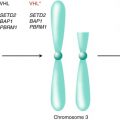Group
N
Study type
Treatment
Primary tumor
Disease state
MD Anderson Cancer Center [9]
50
Prospective
Bevacizumab+/– erlotinib
Resectable
Metastatic with primary in place: 50
University of North Carolina [6]
30
Prospective
Sorafenib
Resectable
Metastatic with primary in place: 13
Localized disease: 17
MD Anderson Cancer Center [12]
44
Retrospective
Sunitinib
Sorafenib
Bevacizumab
Resectable
Metastatic with primary in place: 40
Retroperitoneal recurrence: 4
Cleveland Clinic [8]
19
Retrospective
Sunitinib
Sorafenib
Bevacizumab
Unresectable
Bilateral primary tumors: 2
Locally advanced: 8
Locally recurrent: 6
Metastatic disease: 3
VU University Medical Center [7]
17
Retrospective
Sunitinib
Mixed
Metastatic with primary in place: 17
Stanford Medical Center [10]
14
Case series
Sunitinib
Sorafenib
Mixed
Locally advanced: 2
Metastatic with primary in place: 9
Metastatic site: 3
MD Anderson Cancer Center
24
Prospective
Axitinib
Resectable
Locally advanced: all
Table 20.2
Evidence of surgically significant downstaging
Group | Size change of primary tumor after treatment with targeted therapy | Surgically significant downstaging |
|---|---|---|
MD Anderson Cancer Center [9] | Median 0 % (range +44 to −25) | 0/50 |
University of North Carolina [6] | Median −9.6 % (range +16 to −40 %) | Not determined |
MD Anderson Cancer Center [12] | Not reported | Not determined |
Cleveland Clinic [8] | Not reported | 2/19 patients with bilateral primary tumors were able to undergo a partial nephrectomy plus radical nephrectomy and bilateral partial nephrectomy, respectively |
VU University Medical Center [7] | Median −12 % (range +11 to −33 %) | 4/17 patients previously not considered surgical candidates underwent nephrectomy |
Stanford Medical Center [10] | Median −18 % (range −8 to −25 %) | One patient converted from open to laparoscopic nephrectomy One patient showed regression of IVC thrombus 2 patients with local recurrence were rendered surgical candidates secondary to regression of tumor |
MD Anderson Cancer Center | Median −28.3 % (range 5.3–42.9 %) | Five patients underwent partial nephrectomy |
Cowey and Rathmell reported a 30-patient study evaluating presurgical treatment with sorafenib [6]. Seventeen patients had localized disease and 13 had metastatic disease. After a 1-month course of sorafenib therapy, a median decrease of 9.6 % was observed in primary tumor size (range 16–40 %), and loss of intratumoral enhancement was observed. According to Response Evaluation Criteria in Solid Tumors (RECIST), two patients had a partial response and 26 had stable disease, with none of the 28 evaluable patients progressing on therapy. A small number of patients experienced true downstaging, resulting in conversion from a planned nephrectomy to a partial nephrectomy in one case and conversion from probable open to a hand-assisted laparoscopic nephrectomy.
Van der Veldt et al. describe a series of 22 patients with primary tumors in place who received sunitinib therapy on an expanded access trial [7]. The decision not to perform a nephrectomy was based on a surgically unresectable primary tumor in ten patients, extensive metastatic burden defined as the sum of the diameter of the metastases exceeding the diameter of the primary tumor in six patients, poor Memorial Sloan-Kettering Cancer Center status in two patients, solitary kidney in two patients, advanced age in one patient, and doctor’s choice in one patient. Seventeen patients were evaluable. According to RECIST measurement of the primary tumor, 4 patients had a partial response, 12 had stable disease, and 1 had progressive disease. Concordance between primary and metastatic disease response was seen in 16 of the 17 patients. Three patients ultimately underwent cytoreductive nephrectomy, after substantial primary tumor regression. These patients had been previously considered inoperable because of possible contiguous liver invasion by their primary tumors.
Thomas et al. published a retrospective 19-patient series of individuals treated with targeted therapy and subsequent resection [8]. The indication for neoadjuvant-targeted therapy in patients before primary tumor removal was an unresectable primary tumor or the inability to perform partial nephrectomy in those with bilateral RCC. Eight patients had locally advanced disease, six had a local recurrence, and three had metastatic disease. Two patients had extensive bilateral primary RCC. Twelve patients were treated with sunitinib, three with sorafenib, and four with bevacizumab plus IFN. A median 7.2 % shrinkage was seen across all 19 patients, with a RECIST PR in two primary tumors and a 20 % or greater shrinkage in six other patients. The two patients with extensive bilateral disease achieved successful downsizing of their primary tumors, and underwent partial nephrectomy followed by radical nephrectomy in one case, and bilateral partial nephrectomies in the second case. Eighteen patients underwent open nephrectomy, and three had laparoscopic surgery. One patient (5 %) had a pathological complete response.
Jonasch et al. reported on 50 patients with mRCC and primary tumor in place who received an 8-week course of preoperative bevacizumab followed by cytoreductive nephrectomy [9]. Of 45 radiographically evaluable patients, 22 had some degree of primary tumor growth during the 8-week treatment period, and 13, 7, and 3 experienced a 0–10, 11–20, and greater than 20 % primary tumor shrinkage, respectively. In none of these patients did the change in primary tumor size or characteristics result in a decreased surgical difficulty or a conversion from radical to partial nephrectomy.
Harshman and colleagues reported on 14 patients treated with either sunitinib (n = 10) or sorafenib (n = 4) prior to nephrectomy [10]. Presurgical therapy was given with the intention to convert two patients with locally advanced disease to an operative state, downstage nine patients prior to cytoreductive nephrectomy, and three patients prior to metastasectomy. Patients were treated a median of 17 weeks prior to surgery and had a median 2-week washout period. Six of the 11 patients with primary renal masses experienced shrinkage, with median primary tumor shrinkage of 18 % (range 17–25 %).
Karam et al. published the most recent presurgical study [11]. This 23-patient trial tested the impact of axitinib on downsizing primary tumors in patients with biopsy-proven nonmetastatic clear cell RCC. Patients with locally advanced RCC received axitinib 5 mg PO BID for up to 12 weeks. Axitinib was continued until 36 h prior to surgery. Patients then underwent either partial or radical nephrectomy. Median reduction of primary RCC diameter was 28.3 %. Eleven patients experienced a partial response by RECIST. Thirteen patients had stable disease. The most common side effects included hypertension, fatigue, mucositis, hypothyroidism, and hand-foot syndrome. Postoperatively, two grade 3 and 13 grade 2 complications were noted. No grade 4 or 5 complications were reported in this trial. The impressive results seen in this pilot trial suggest that axitinib may be the most effective cytoreductive antiangiogenic agent in the presurgical setting. Nonetheless, these patients were different from most of the other studies in that they did not have metastatic disease. This may imply that these tumors were less genomically complex and as such may be more responsive to therapy. Follow-up studies in the metastatic presurgical setting are required to confirm the observations seen in this trial.
Despite their small size, these studies provide us with some important information. The first is that pretreatment with antiangiogenic agents does appear to have a modest but consistent downsizing effect on primary tumor size. The second is that there are relatively few instances of downstaging, defined by the switch from a more elaborate or extirpative to a less significant surgery. This could be due to two possibilities. The first is that we are hitting the right target with these agents, but the agents lack potency. The second is that we need to hit either alternate or additional targets with presurgical therapy to see a meaningful change in surgical needs. The recent data with axitinib suggest that it may provide the strongest impact on primary tumors and as such warrants further investigation.
Stay updated, free articles. Join our Telegram channel

Full access? Get Clinical Tree







